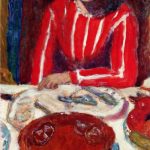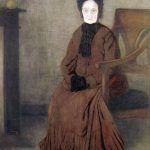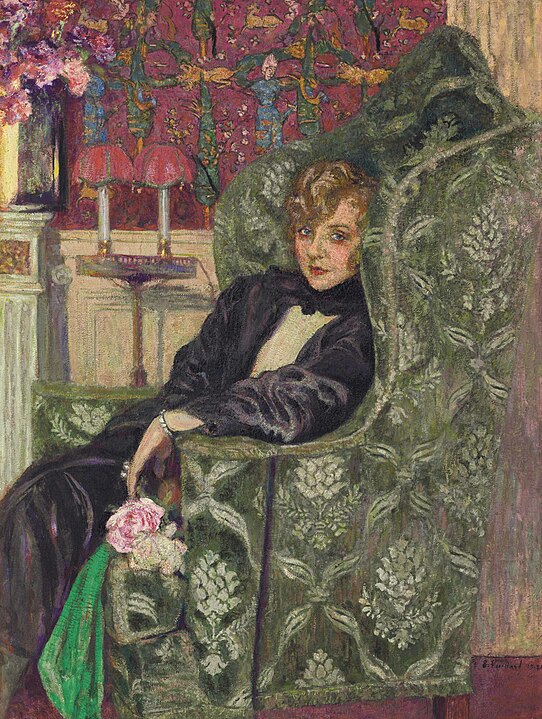
Édouard Vuillard, a prominent French painter and printmaker of the Post-Impressionist era, was born on November 11, 1868, in Cuiseaux, a small town in eastern France. His early life was marked by an immersion in the artistic milieu, as his father, a retired sea captain, supported his son’s artistic endeavors. Vuillard’s precocious talent became evident at a young age, and by 1886, he enrolled in the prestigious Académie Julian in Paris, where he crossed paths with other aspiring artists who would later form the nucleus of the Nabis group.
The Nabis, a collective of avant-garde artists, including Pierre Bonnard and Maurice Denis, significantly influenced Vuillard’s artistic trajectory. Together, they sought to break away from the traditional constraints of academic art and embrace a more subjective and symbolic approach. Vuillard’s early works, steeped in the Nabi aesthetic, demonstrated a fascination with everyday life and an emphasis on color and pattern.
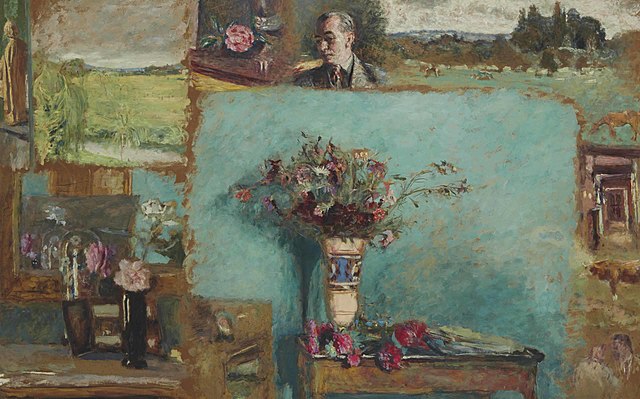
Vuillard’s career gained momentum in the 1890s, during a period marked by fervent artistic experimentation and the rise of new movements in Paris. He, along with his Nabi compatriots, contributed to the artistic dialogue, infusing their works with a sense of spirituality and emotional depth. Vuillard’s paintings of this period, such as “The Flowered Dress” (1891) and “The Seamstress” (1893), encapsulated his distinctive style characterized by flattened forms and a harmonious palette.
Nabi Influence
The artist’s association with the Nabis not only shaped his artistic vision but also paved the way for his involvement in decorative arts and interior design. Vuillard’s collaboration with Thadée Natanson, the publisher of the influential La Revue Blanche, proved pivotal. He designed covers and illustrations for the magazine, showcasing his burgeoning interest in creating art for functional and decorative purposes.
Vuillard’s artistic evolution continued in the early 20th century when he became associated with Les XX, a group of progressive Belgian artists. His exposure to the Belgian art scene expanded his horizons, leading to a more profound exploration of spatial relationships and an increased focus on the human figure. During this period, he produced remarkable portraits like “Portrait of Félix Vallotton” (1900), displaying his ability to capture the psychological depth of his subjects.
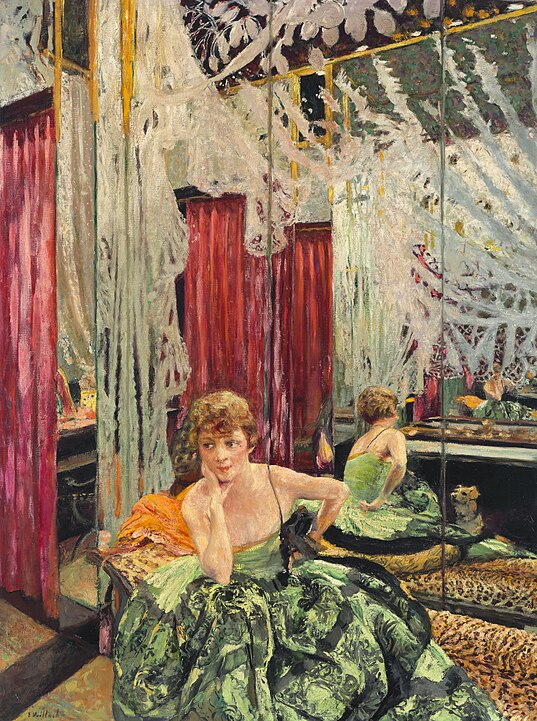
The years leading up to World War I witnessed Vuillard’s artistic diversification. While he remained committed to painting, he delved into other forms of artistic expression, including theater design and illustration. His involvement with the avant-garde Théâtre de l’Œuvre and his collaboration with playwrights such as André Gide underscored his multifaceted talents. Vuillard’s set designs, marked by a fusion of symbolism and modernism, added a new dimension to his artistic repertoire.
As the war unfolded, Vuillard’s work took a turn towards somber introspection. The turmoil of the era influenced his palette and subject matter, resulting in works that reflected a more muted and contemplative mood. The painting “The War” (1914-1917) stands as a poignant testament to the artist’s response to the upheaval of the times.
Exploring it all
In the post-war period, Vuillard’s artistic output remained prolific. He continued to explore diverse themes, ranging from intimate domestic scenes to the bustling streets of Paris. His engagement with the mundane aspects of life, such as family gatherings and interiors, showcased an enduring commitment to capturing the poetry of everyday existence. Notable works from this period include “The Artist’s Mother and Sister in the Garden at Vaucresson” (1920) and “The Linen Cupboard” (1918-1919).
Despite the evolving artistic landscape and the emergence of new movements, Vuillard retained his distinctive style throughout his career. His later works, characterized by a refined color palette and a masterful handling of light and shadow, continued to resonate with a sense of quietude and introspection. Vuillard’s oeuvre exemplifies a seamless blend of tradition and modernity, drawing inspiration from both the Old Masters and the avant-garde currents of his time.
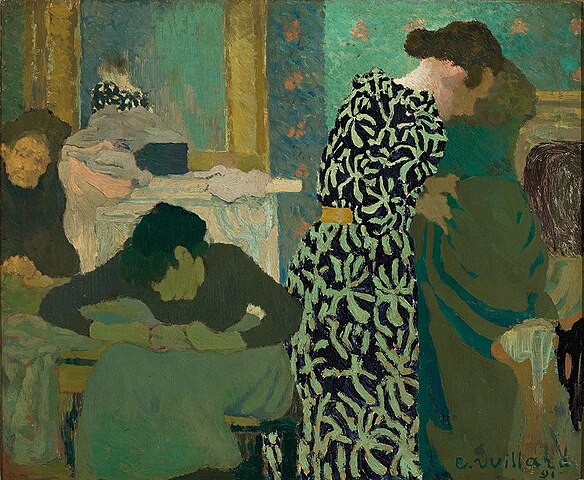
Édouard Vuillard’s legacy endures as a testament to his contributions to the rich tapestry of 19th and 20th-century art. His ability to infuse everyday scenes with emotional resonance, coupled with his ventures into decorative arts and theater design, solidifies his place in the annals of art history. Vuillard passed away on June 21, 1940, leaving behind a body of work that continues to captivate and inspire art enthusiasts and scholars alike.




